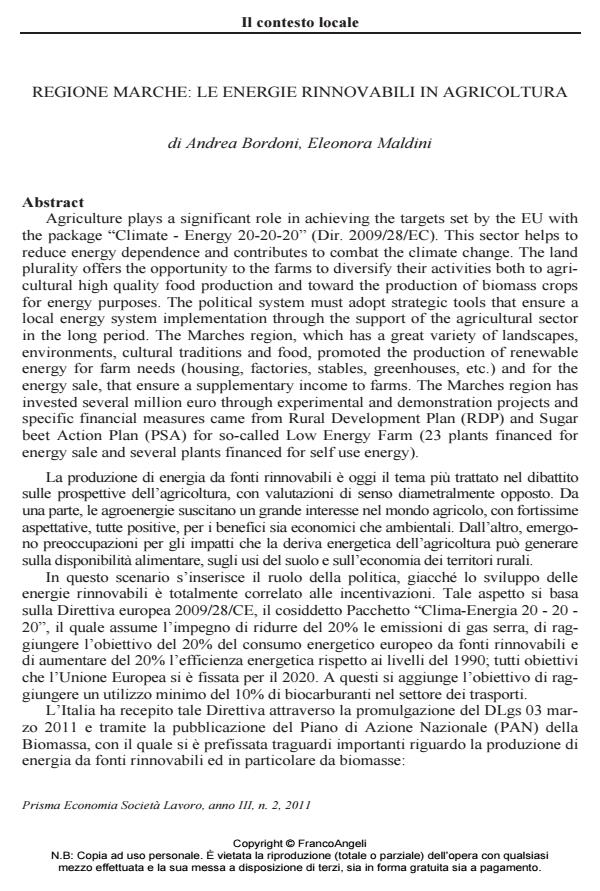Regione Marche: le energie rinnovabili in agricoltura
Journal title PRISMA Economia - Società - Lavoro
Author/s Andrea Bordoni, Eleonora Maldini
Publishing Year 2012 Issue 2011/2 Language Italian
Pages 11 P. 110-120 File size 699 KB
DOI 10.3280/PRI2011-002010
DOI is like a bar code for intellectual property: to have more infomation
click here
Below, you can see the article first page
If you want to buy this article in PDF format, you can do it, following the instructions to buy download credits

FrancoAngeli is member of Publishers International Linking Association, Inc (PILA), a not-for-profit association which run the CrossRef service enabling links to and from online scholarly content.
Agriculture plays a significant role in achieving the targets set by the EU with the package “Climate - Energy 20-20-20” (Dir. 2009/28/EC). This sector helps to reduce energy dependence and contributes to combat the climate change. The land plurality offers the opportunity to the farms to diversify their activities both to agricultural high quality food production and toward the production of biomass crops for energy purposes. The political system must adopt strategic tools that ensure a local energy system implementation through the support of the agricultural sector in the long period. The Marches region, which has a great variety of landscapes, environments, cultural traditions and food, promoted the production of renewable energy for farm needs (housing, factories, stables, greenhouses, etc.) and for the energy sale, that ensure a supplementary income to farms. The Marches region has invested several million euro through experimental and demonstration projects and specific financial measures came from Rural Development Plan (RDP) and Sugar beet Action Plan (PSA) for so-called Low Energy Farm (23 plants financed for energy sale and several plants financed for self use energy).
Andrea Bordoni, Eleonora Maldini, Regione Marche: le energie rinnovabili in agricoltura in "PRISMA Economia - Società - Lavoro" 2/2011, pp 110-120, DOI: 10.3280/PRI2011-002010